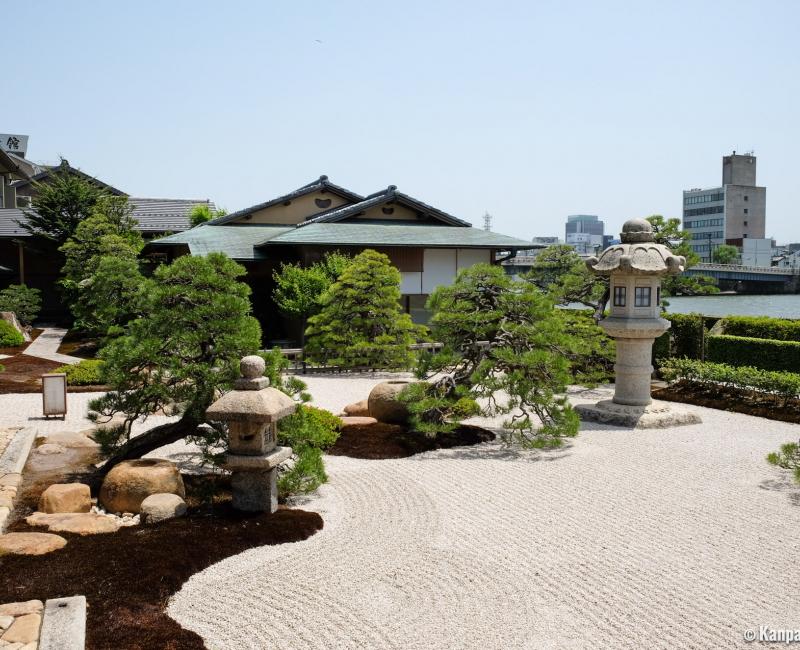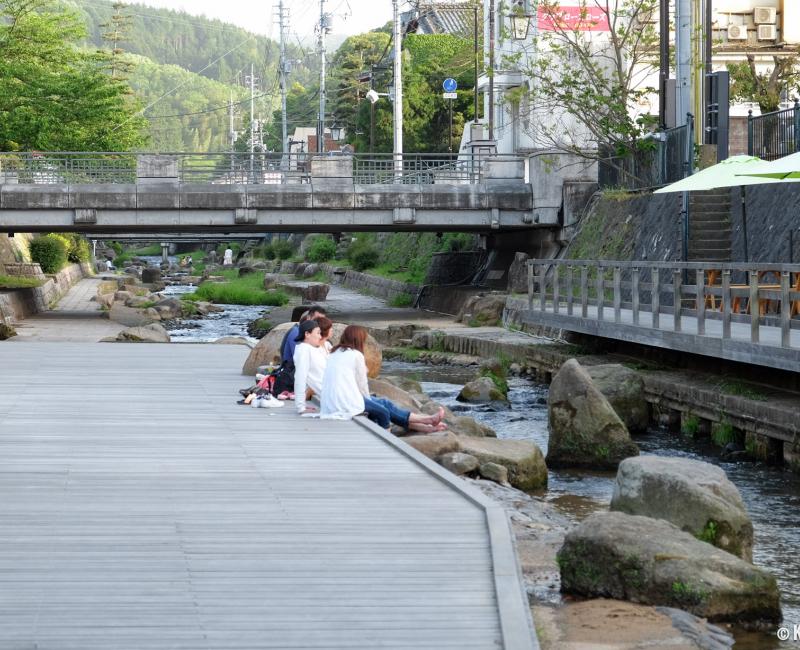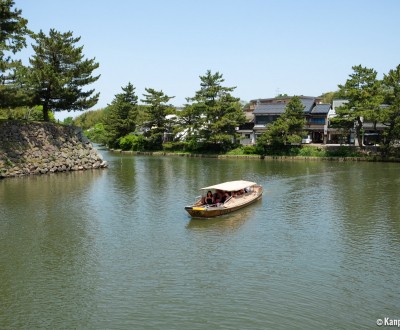Matsue
A Historical City by the Water
Matsue is the capital city of Shimane Prefecture, located along the Sea of Japan in the Chugoku region of Honshu Island. Renowned for its original castle, this friendly city introduces visitors to the feudal lord era of the Edo period in a quiet and sophisticated atmosphere. Formerly known as Izumo province, this region is a main territory of the kami, Shinto deities.
Matsue owes its nickname, "city of water," to its famous canals that surround the castle 🏯 flowing from the Ohashi River and crossing to the city center, as well as to Shinji and Nakaumi Lake and, of course, the Sea of Japan located a few kilometers away to the northwest.
Built on a swamp at the beginning of the 17th century during the Edo era (1603-1868), Matsue retains its former architecture throughout the city’s samurai districts, teramachi temples and merchants.
It is worth turning away from the classic tourist itineraries to visit this pretty city and discover a true postcard picture of traditional Japan—mystical and refined. Moreover, the city offers a gathering of economical facilities for foreign travelers; tourists can show their passports at sightseeing locations and public transportation to enjoy discounts.
Culinary specialties remind visitors of the cultural heritage of Matsue; there are tea ceremonies with elegant wagashi pastries, and there is a local production of shellfish, Shijimi, which is fished in the deep waters of Shinji Lake. The city also makes its own saké.

Authentic feudal heart
The city center can be discovered by taking a Horikawa leisure boat and navigating across the castle’s moats, which have never been destroyed or buried. For approximately one hour, passengers peacefully admire the diverse landscapes of Matsue: commercial avenues, recent and old buildings, residential areas, aquatic flowers and forests. Very pleasant year-round, the cruise also goes below several wood bridges with architecture that showcases the important historical heritage of this city.
At each level of the beautiful street Shiomi Nawate, we can stop to visit the castle, the city’s history museum, the tea house, and writer Lafcadio Hearn’s residence.
Breathable Shinji Lake
Shinji-ko is the seventh biggest lake in Japan renowned for its brackish-water full of shellfish and its plaisant lakefront promenade. Sunsets on the lake are particularly famous, with beautiful water reflections and the small islands in the background. Note than between April and September, the Shimane Museum of Art, located next to the lake, closes at dusk to enjoy the last sun lights. The lake becomes even more beautiful under the summer fireworks 🎆 that occur at the end of July.

Mythological wanderings in the surroundings
A little south of Shinji-ko, visitors can go to the thermal district of Tamatsukuri Onsen ♨️. This place is frequented by Japanese people searching for the famous en-musubi, "tying a bond" or "matchmaking", which helps couples consolidate their relationships or singles to find love. The Tamayu water stream, a concrete landscape, may not please unaware visitors. However, these places are filled with Japanese mythology, with protective magatama stones in the shape of commas ornamenting the bridges.
In the southern part of Matsue on the station side, we can visit two former shrines Yaekagi and Kamosu, linked together by the pleasant Haniwa walking and biking path. While the former celebrates happy marriages, the latter happens to be the oldest pavilion in Japan with Shinto architecture in the taisha-zukuri style, just like the Izumo Grand Shrine. Indeed, its main building, Honden, which dates from the 16th century, is classified as a national treasure; it venerates Izanami, the deity of creation and destruction.
On the extreme east side along the marine coast, the small port of Mihonoseki reveals its charms. A commercial port during the Edo period, it used to be a stopover on the Kitamaebune marine route, going from Kansai to Hokkaido. Merchant boats waited for the good wind in this port of call. This area slowly transformed into a pleasure district, where it is pleasant to wander among the pine trees of the paved street Aoishidadami-dori and the Miho-jinja shrine dedicated to Ebisu, the deity of fishermen and prosperity. Visitors can find charming ryokan and restaurants.
Renowned as being more tourist-friendly than its neighbors, Shimane Prefecture is also known for its beaches 🏖, Izumo Taisha Shrine, as well as Iwami Ginzan Silver Mine that is linked to Oda City.

